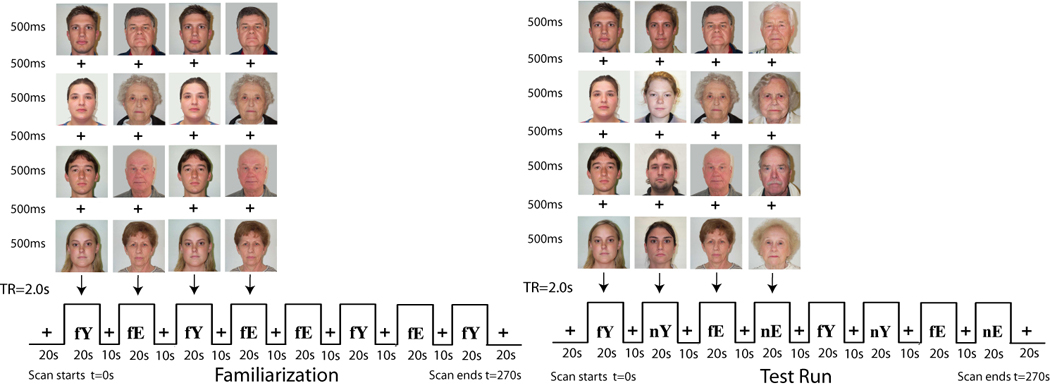Figure 1. Novel and Face-Age Paradigm.

Stimulus presentations using neutral faces were divided into one familiarization run and two test runs. The familiarization run included repeated presentations of 8 unique identities, 4 elderly (fE) and 4 young (fY), viewed over eight 20s blocks with an interspersed 10s fixation. Each test run included eight alternating blocks of the following four stimuli types: familiarized elderly and young faces (fE, fY) and novel elderly and young faces (nE, nY). An example of only one test run and a single run order is shown. Each face stimulus was presented for 500ms with a 500 ms interstimulus interval. Each run was bracketed by two 20s fixation blocks, for a total of 4 minutes 30 seconds scan. The repetition time (TR) for obtaining whole brain images was 2s.
